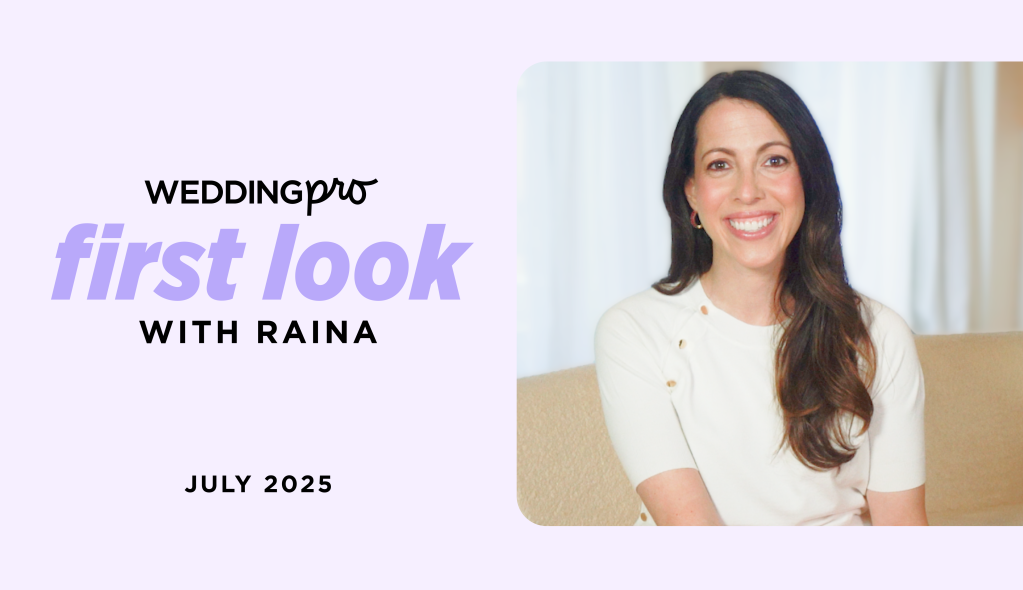Do You Need a CRM to Manage Your Booking Workflow?

Two opinions from two wedding pros
Every day you wake up to work on building your business, there are decisions to be made. Should I reply to the emails in my inbox or write that blog post? Do I really have time for that tasting and mockup on the same day? Should I sign up for that software? But, with all the choices you have, there is one every wedding pro should make—that’s to create business workflows. The next step? You need to decide how you are going to manage them. And, because (just like everything else) there are lots of ways to go about it, we wanted to hear how different pros go about it leveraging technology or leaning on process. Read on to see what decisions wedding planner, Tiffany Chalk, and photographer, Bobbi Brinkman, have made for their businesses and get some ideas that might help you manage your booking workflow too.
Why you need a CRM to manage your business workflows
We asked Tiffany of Tiffany Chalk Events for her thoughts on managing client and booking workflows. Here is her opinion on how to approach it and why workflows are important.
Let me first start by saying “an efficient business is a profitable business” and you cannot be efficient in your business without systems and workflows, hence why they are so important. A workflow is simply the automation of a business process (as a whole or part of), and its key benefits are that workflows:
- save you and your clients time
- improve efficiency
- ensure a consistent client experience
- reduce risk and/or mistakes
- streamline the sales process
With that in mind, it is important that anything you might currently do haphazardly, inefficiently, or differently every time, that you develop a system. Using client relationship management software (CRM) is essential when establishing workflows, as they are the vehicle that will drive the communication, store, and manage customer information, allow you to collaborate with your sales team, keep track of communication between your company and your clients, and build efficient interdepartmental workflows. There is not a one-size-fits-all way to put together a workflow and it can be as simple or complex as you need—and should ultimately serve you and your clients well. The end result are pillars of success that will grow your company and nurture your client relationships. Remember—a well-oiled system will flow regardless of who comes and goes!
How to manage a booking workflow without a CRM
We asked Bobbi of Bobbi Brinkman Photography to talk about her workflow and she shared details about how she does it without using a CRM.
After 40 years as a wedding business owner, I can tell you that booking and client workflows are just as important in my business today as when I first turned on my open sign. That being said, it may come as a surprise (and may not be the popular opinion of many other business owners), but the systems I use are not on any of the CRM systems available. Instead, the old paper trail is alive and still working well here at BBP. Yes, we have a digital folder on our office computer that holds the information about each client and, while it may not have all the bells and whistles that today’s CRM systems do, our system has helped us manage up to 40 weddings, 10 events and miscellaneous studio sessions a year.
The system is really simple. A client reaches out to us via contact form or email and an automatic response is delivered if that comes in after hours. Once we get a reply email and they have shared more about their story, my studio manager then lets them know I would love to speak to them either in a Zoom (we were Zooming before COVID) or phone call so I can find out how best our photography can serve them. We work hard to let clients know early on who we are, what and how we do what we do and who we serve and why, so the emails are more general conversation than selling and only take one before we move into the one-on-one chat with me.
Once I speak with the client, I let them know at that time that Tina, my studio manager, will be sending an email with all the info we chatted about and what the process is to welcome them to the BBP family. No fancy proposal—just a simple, direct email that talks about the timeline we went over, the process from now until wedding day through delivery of wedding day photos. It addresses how we work, what we do, and when they can expect communication from Tina as well as what we expect from them; she has set up reminders to know when each client needs these forms as well as when payments are due.
This onboarding and workflow has served us and our couples well for years and, while we know we may save some time with a CRM system in place, we have found that with our hands on approach and treating each couple with the level of personal attention they need, they seem to get what they need and when they need it. This is just our experience with our clients and each business owner needs to run their business in the way that serves them and their clients best.
Your booking workflow is an important one and if you feel like you’re not getting the responses you need, be sure to get Alan Berg’s tips to help you avoid getting ghosted.
Photo Credit: ColorJoy Stock
Let's grow your business together!
Start advertising on The Knot and WeddingWire, the top two wedding planning platforms.


